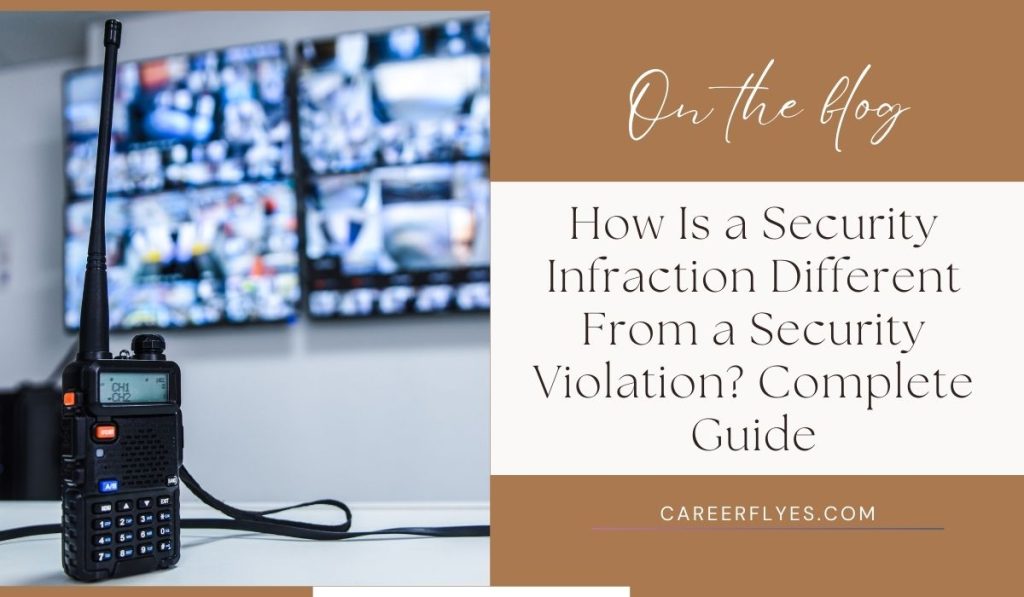How Is a Security Infraction Different From a Security Violation?
3 min read
In the world of organizational security, understanding the difference between a security infraction and a security violation is crucial. These terms often appear in security policies, audits, and incident reports, but they represent distinct levels of risk and impact.
This article explains the key differences, provides examples, and offers guidance on handling and preventing these issues.
What Is a Security Infraction?

A security infraction is a minor breach of security policies or procedures. These incidents are typically unintentional and pose minimal risk to the organization.
Some examples of Security Infractions:
- Forgetting to lock a cabinet containing non-sensitive documents.
- Leaving a work badge or access card in a visible, unsecured location.
- Failing to follow proper procedures for logging out of a system.
Infractions often occur due to oversight or lack of attention rather than malicious intent. While they do not usually lead to immediate harm, repeated infractions can highlight gaps in training or policy adherence.
What Is a Security Violation?
A security violation, on the other hand, is a serious breach of security protocols. These incidents can result in significant harm to the organization, its data, or its personnel. Violations are often intentional but can also result from gross negligence.
Some examples of Security Violations
- Sharing classified or sensitive information with unauthorized individuals.
- Accessing restricted areas or systems without proper clearance.
- Deliberately tampering with security systems or protocols.
Security violations can lead to regulatory fines, reputational damage, or legal consequences, making them a critical concern for any organization.
Key Differences Between Infractions and Violations
Understanding the distinction between infractions and violations is essential for proper handling and prevention.
| Aspect | Security Infraction | Security Violation |
|---|---|---|
| Risk Level | Low | High |
| Intent | Unintentional or accidental | Often intentional or grossly negligent |
| Examples | Leaving documents unsecured | Sharing classified information |
| Consequences | Corrective training, warnings | Job termination, legal action |
How Organizations Handle Infractions and Violations?

Here are some ways of how Organizations Handle Infractions and Violations:
1. Dealing With Infractions
- Internal Reporting: Documenting the incident for future audits.
- Corrective Training: Providing guidance to prevent recurrence.
- Monitoring Trends: Identifying patterns in minor breaches to address systemic issues.
2. Dealing With Violations
- Incident Escalation: Immediately reporting to senior security management.
- Investigation: Conducting a thorough review to assess intent and impact.
- Disciplinary Actions: Imposing penalties, including job termination or legal proceedings, if necessary.
Consequences of Security Infractions and Violations
The consequences for infractions and violations differ based on their severity and impact:
1. For Individuals
- Infractions: Warnings, retraining, or performance reviews.
- Violations: Job termination, loss of security clearance, or criminal charges.
2. For Organizations
- Infractions: Minimal impact, such as procedural inefficiencies.
- Violations: Financial losses, regulatory penalties, and reputational damage.
Preventing Security Infractions and Violations
Proactive measures can reduce the likelihood of security breaches:
1. Training and Awareness
- Regularly train employees on security protocols.
- Emphasize the importance of attention to detail in everyday tasks.
2. Robust Policies
- Clearly define and differentiate infractions and violations in security guidelines.
- Implement automated systems to detect potential breaches early.
3. Monitoring and Auditing
- Conduct regular security audits to identify recurring infractions.
- Perform simulated breach drills to prepare for real-world scenarios.
Legal and Regulatory Context
Security infractions and violations have specific legal implications depending on the organization’s industry and jurisdiction. For example:
- GDPR: Governs the handling of personal data in the European Union.
- HIPAA: Sets standards for protecting sensitive health information in the U.S.
- FISMA: Mandates security requirements for federal agencies in the U.S.
Compliance with these regulations is crucial to avoid severe penalties.
Conclusion
The difference between a security infraction and a security violation lies in the intent, risk, and consequences associated with the act. While infractions are minor and often unintentional, violations pose a significant threat to an organization’s integrity and safety. By understanding these distinctions and implementing preventive measures, organizations can maintain a robust security framework.


